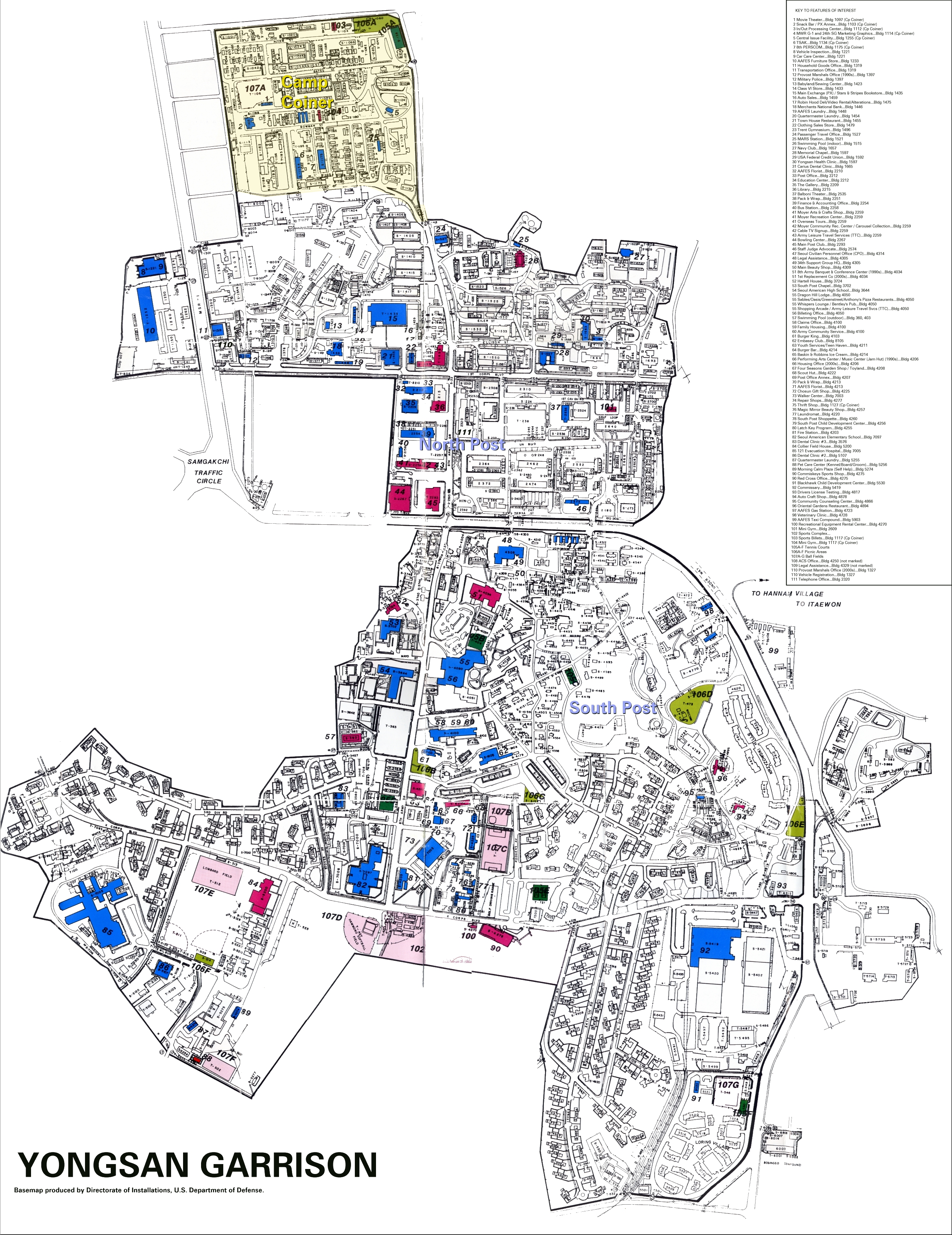|
Itaewon
Itaewon (; ) is a commercial district in Seoul, South Korea, known for its nightlife and multi-ethnic population. Etymology The name Itaewon was originally derived from the name of an inn located there during the Joseon period. Today it's called Itaewon alluding to its abundance of pear trees (梨泰院). According to a folktale, the name was also written using different Hanja characters that alluded to foreign babies (異胎院). When the Japanese invaded Seoul (1592–1593) during the Imjin War, a group of Japanese soldiers seized a Buddhist temple in what is now Itaewon where Buddhist nuns lived. The soldiers stayed at the temple for a while and raped the Buddhist nuns. When the soldiers left they burned down the Buddhist temple. The raped Buddhist nuns now homeless settled nearby and eventually gave birth to children. People from neighboring villages named the area where the children were raised ''Itaewon'' in a portmanteau of terms meaning ''different'', ''foreign'' and ''fe ... [...More Info...] [...Related Items...] OR: [Wikipedia] [Google] [Baidu] |
Yongsan District
Yongsan District (, ) is one of the 25 List of districts of Seoul, districts of Seoul, South Korea. It has a population of 231,685 (2020) and has a geographic area of , and is divided into 19 ''Dong (administrative division), dong'' (administrative neighborhoods). Yongsan is located near Downtown Seoul, on the northern bank of the Han River (Korea), Han River, bordering the city districts of Jung District, Seoul, Jung to the north, Mapo District, Mapo to the west, Yeongdeungpo District, Yeongdeungpo and Dongjak District, Dongjak to the southwest, Seocho District, Seocho and Gangnam District to the southeast, and Seongdong District, Seongdong to the east. Description Yongsan District is a district in central Seoul, South Korea. It sits to the north of the Han River (Korea), Han River and is part of the ''Outer old Seoul, Seongjeosimni'' (Outer old Seoul) area immediately south of Seoul's City centre, historic center in Jung district on the southern side of Namsan. It is home to rou ... [...More Info...] [...Related Items...] OR: [Wikipedia] [Google] [Baidu] |
Itaewon-dong
Itaewon-dong () is a ''dong'' (neighborhood) of Yongsan District, Seoul, South Korea. Description Itaewon is a melting pot of people from all over the world. Itaewon is well known as the most internationalized place in Seoul. For 50 years, it has attracted foreigners more than any other place in Seoul. At first, it served residential and commercial functions for American soldiers and foreign elites working in the embassies and transnational corporations due to the location of a US military base and most embassies in Korea. This historical condition draws over 2000 international residents to live in Itaewon from more than 80 countries. Due to these experiences, Itaewon has been the most common place to see foreigners. English is widely spoken here, unlike in other areas in Korea.Koh, M., & Malecki, E. J. (2016) (p.5, para. 2). Education Schools located in Itaewon-dong: * Itaewon Elementary School * Bogwang Elementary School * Seoul Digitech High School See also *Administrative d ... [...More Info...] [...Related Items...] OR: [Wikipedia] [Google] [Baidu] |
Seoul
Seoul, officially Seoul Special Metropolitan City, is the capital city, capital and largest city of South Korea. The broader Seoul Metropolitan Area, encompassing Seoul, Gyeonggi Province and Incheon, emerged as the world's List of cities by GDP, sixth largest metropolitan economy in 2022, trailing behind New York metropolitan area, New York, Greater Tokyo Area, Tokyo, Greater Los Angeles, Los Angeles, Paris metropolitan area, Paris, and London metropolitan area, London, and hosts more than half of South Korea's population. Although Seoul's population peaked at over 10 million, it has gradually decreased since 2014, standing at about 9.6 million residents as of 2024. Seoul is the seat of the Government of South Korea, South Korean government. Seoul's history traces back to 18 BC when it was founded by the people of Baekje, one of the Three Kingdoms of Korea. During the Joseon dynasty, Seoul was officially designated as the capital, surrounded by the Fortress Wall of Seoul. I ... [...More Info...] [...Related Items...] OR: [Wikipedia] [Google] [Baidu] |
Yongsan Garrison
Yongsan Garrison (; Hanja: ), meaning "dragon hill garrison", is an area located in the Yongsan District of central Seoul, South Korea. The site served as the headquarters for U.S. military forces stationed in South Korea, known as United States Forces Korea (USFK), and as United States Army Garrison Yongsan (USAG-Yongsan) until 2018, under the supervision of the U.S. Army's Installation Management Command Pacific Region. From 1910 to 1945 it served as headquarters for the Imperial Japanese Army in Korea. The USFK headquarters relocated to the new $11 billion Camp Humphreys in Pyeongtaek south of Seoul in 2018, as part of the Yongsan Relocation Plan. By the end of 2019, more than 20,000 U.S. troops and family members will have been relocated to the new Camp Humphreys facility south of Seoul. While most of the land will be returned to the South Korean government, the U.S. will retain a small portion of land in order to keep open the Dragon Hill Lodge military resort hotel and fo ... [...More Info...] [...Related Items...] OR: [Wikipedia] [Google] [Baidu] |
German Cuisine
The cuisine of Germany consists of many different local or regional cuisines, reflecting the country's federal history. Germany itself is part of the larger cultural region of Central Europe, sharing many culinary traditions with neighbouring countries such as Poland and the Czech Republic (and Slovakia as well). In Northern Europe, in Denmark more specifically, the traditional Danish cuisine had also been influenced by German cuisine in the past, hence several dishes being common between the two countries (e.g. potato salad). At the same time, German cuisine also shares many similar characteristics with Western European cuisine, as is reflected by some common traditional dishes served in the Low Countries (i.e. Netherlands, Belgium, and, most notably, Luxembourg). Southern German regions, such as Bavaria and Swabia, share dishes with Austrian cuisine and parts of Swiss cuisine as well. The German cuisine has also influenced other European cuisines from Central-Eastern Europe su ... [...More Info...] [...Related Items...] OR: [Wikipedia] [Google] [Baidu] |
LGBT Movement
Lesbian, gay, bisexual, transgender and queer (LGBTQ) movements are social movements that advocate for LGBTQ people in society. Although there is not a primary or an overarching central organization that represents all LGBTQ people and their interests, numerous LGBTQ rights organizations are active worldwide. The first organization to promote LGBTQ rights was the Scientific-Humanitarian Committee, founded in 1897 in Berlin. A commonly stated goal among these movements is equal rights for LGBTQ people, often focusing on specific goals such as ending the criminalization of homosexuality or enacting same-sex marriage. Others have focused on building LGBTQ communities or worked towards liberation for the broader society from homophobia, biphobia, and transphobia. LGBTQ movements organized today are made up of a wide range of political activism and cultural activity, including lobbying, street marches, social groups, media, art, and research. Overview Sociologist Mar ... [...More Info...] [...Related Items...] OR: [Wikipedia] [Google] [Baidu] |
20231103 - Itaewon - 3
311 may refer to: * 311 (number), a natural number * AD 311, a year of the Julian calendar, in the fourth century AD * 311 BC, a year of the pre-Julian Roman calendar * 311 (band), an American band ** ''311'' (album), band 311's self-titled album * 311 (DSM-IV), DSM-IV code for "Depressive Disorder Not Otherwise Specified" * 311 Boyz, a teen gang in Las Vegas, Nevada * 311 Claudia, a main-belt asteroid * 3-1-1, the telephone number of local information service operated by some local governments in the United States and Canada * 3-1-1 for Carry-Ons, a procedure enacted by the United States Transportation Security Administration * 311 earthquake, the 2011 Tōhoku earthquake and tsunami off Japan * 311, the area code of a common fictitious telephone number (311-555-2368) used in early Bell System ads and in fiction * For the KKK code '311', see the list of symbols designated by the Anti-Defamation League as hate symbols This is a list of hate symbols, including acronyms, nu ... [...More Info...] [...Related Items...] OR: [Wikipedia] [Google] [Baidu] |
British Cuisine
British cuisine consists of the cooking traditions and practices associated with the United Kingdom, including the regional cuisines of English cuisine, England, Scottish cuisine, Scotland, Welsh cuisine, Wales, and Northern Irish cuisine, Northern Ireland. British cuisine has its roots in the cooking traditions of the indigenous Celts, however it has been significantly influenced and shaped by subsequent waves of conquest, notably that of the Roman conquest of Britain, Romans, Anglo-Saxon settlement of Britain, Anglo-Saxons, Viking activity in the British Isles, Vikings, and the Norman Conquest, Normans; waves of migration, notably immigrants from British Indians, India, British Bangladeshis, Bangladesh, British Pakistanis, Pakistan, British Jamaicans, Jamaica and the wider British African-Caribbean people, Caribbean, British Chinese, China, Italians in the United Kingdom, Italy, South Africans in the United Kingdom, South Africa, and Eastern Europe, primarily Poles in the Unite ... [...More Info...] [...Related Items...] OR: [Wikipedia] [Google] [Baidu] |
Italian Cuisine
Italian cuisine is a Mediterranean cuisine#CITEREFDavid1988, David 1988, Introduction, pp. 101–103 consisting of the ingredients, recipes, and cooking techniques developed in Italy since Ancient Roman cuisine, Roman times, and later spread around the world together with waves of Italian diaspora. Significant changes Columbian exchange, occurred with the colonization of the Americas and the consequent introduction of potatoes, tomatoes, capsicums, and maize, as well as sugar beet—the latter introduced in quantity in the 18th century. It is one of the best-known and most widely appreciated Gastronomy, gastronomies worldwide. Italian cuisine includes deeply rooted traditions common throughout the country, as well as all the diverse Regional cuisine, regional gastronomies, different from each other, especially between Northern Italy, the north, Central Italy, the centre, and Southern Italy, the south of Italy, which are in continuous exchange. Many dishes that were once region ... [...More Info...] [...Related Items...] OR: [Wikipedia] [Google] [Baidu] |
French Cuisine
French cuisine is the cooking traditions and practices of France. In the 14th century, Guillaume Tirel, a Court (royal), court chef known as "Taillevent", wrote ''Le Viandier'', one of the earliest recipe collections of medieval France. In the 17th and 18th centuries, chefs François Pierre La Varenne and Marie-Antoine Carême spearheaded movements that shifted French cooking away from its foreign influences and developed France's own indigenous style. French cheese, Cheese and French wine, wine are a major part of the cuisine. They play different roles regionally and nationally, with many variations and ''appellation d'origine contrôlée'' (AOC) (regulated appellation) laws. Culinary tourism and the ''Guide Michelin'' helped to acquaint commoners with the ''cuisine bourgeoise'' of the urban elites and the peasant cuisine of the French countryside starting in the 20th century. Many dishes that were once regional have proliferated in variations across the country. Knowledg ... [...More Info...] [...Related Items...] OR: [Wikipedia] [Google] [Baidu] |
Indian Cuisine
Indian cuisine consists of a variety of regional and traditional cuisines native to the Indian subcontinent. Given the diversity in soil, climate, culture, ethnic groups, and occupations, these cuisines vary substantially and use locally available spices, herbs, vegetables, and fruits. Indian food is also heavily influenced by religion, in particular Hinduism and Islam, cultural choices and traditions. Historical events such as invasions, trade relations, and colonialism have played a role in introducing certain foods to India. The Columbian exchange, Columbian discovery of the New World brought a number of new vegetables and fruits. A number of these such as potatoes, tomatoes, Chili pepper, chillies, peanuts, and guava have become staples in many regions of India. Indian cuisine has shaped the history of international relations; the spice trade between India and Europe was the primary catalyst for Europe's Age of Discovery. Spices were bought from India and traded around ... [...More Info...] [...Related Items...] OR: [Wikipedia] [Google] [Baidu] |







